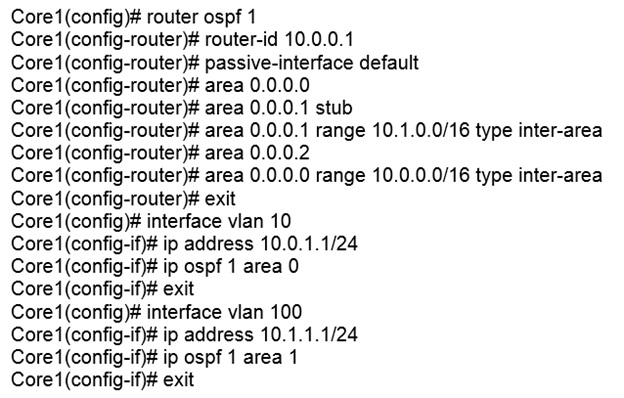Examine the network topology.

The network is configured for OSPF with the following attributes:
✑ Core1 and Core2 and ABRs
✑ Area 1 has 20 networks in the 10.1.0.0/16 range
✑ Area 0 has 10 networks in the 10.0.0.0/16 range
✑ Area 2 has 50 networks in the 10.2.0.0/16 range
✑ The ASBR is importing a static route into Area 1
✑ Core2 has a summary for Area 2: area 0.0.0.2 range 10.2.0.0/16 type inter-area
Here is the OSPF configuration performed on Core1:

Based on the above information, what is correct?